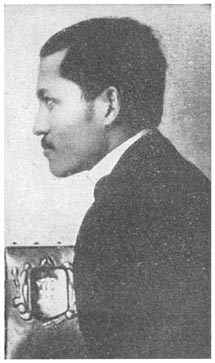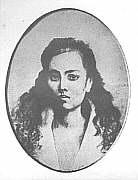 One of Rizal’s youthful aspirations was attained in London, for there he began transcribing the early Spanish history by Morga. A copy of this rare book was in the British Museum and he gained admission as a reader there. Only five hundred persons can be accommodated in the big reading room, and as students are coming from every continent for special researches, good reason has to be shown why these studies cannot be made at some other institution.
One of Rizal’s youthful aspirations was attained in London, for there he began transcribing the early Spanish history by Morga. A copy of this rare book was in the British Museum and he gained admission as a reader there. Only five hundred persons can be accommodated in the big reading room, and as students are coming from every continent for special researches, good reason has to be shown why these studies cannot be made at some other institution.
Besides the copying of the text of Morga’s history, Rizal read many other early writings on the Philippines, and the manifest unfairness of some of these who thought that they could glorify Spain only by disparaging the Filipinos aroused his wrath. Few Spanish writers held up the good name of those who were under their flag, and Rizal had to resort to foreign authorities to disprove their libels. Morga was almost alone among Spanish historians, but his assertions found corroboration in the contemporary chronicles of other nationalities. Rizal spent his evenings in the home of Doctor Regidor, and many a time the bitterness and impatience with which his day’s work in the Museum had inspired him, would be forgotten as the older man counseled patience and urged that such prejudices were to be expected of a little educated nation. Then Rizal’s brow would clear as he quoted his favorite proverb, “To understand all is to forgive all.”
Rizal’s congenial situation in the British capital was disturbed by his discovering a growing interest in the youngest of the three girls whom he daily met. He felt that his career did not permit him to marry, nor was his youthful affection for his cousin in Manila an entirely forgotten sentiment. Besides, though he never lapsed into such disregard for his feminine friends as the low Spanish standard had made too common among the Filipino students in Madrid, Rizal was ever on his guard against himself. So he suggested to Doctor Regidor that he considered it would be better for him to leave London. His parting gift to the family with whom he had lived so happily was a clay medallion bearing in relief the profiles of the three sisters.




